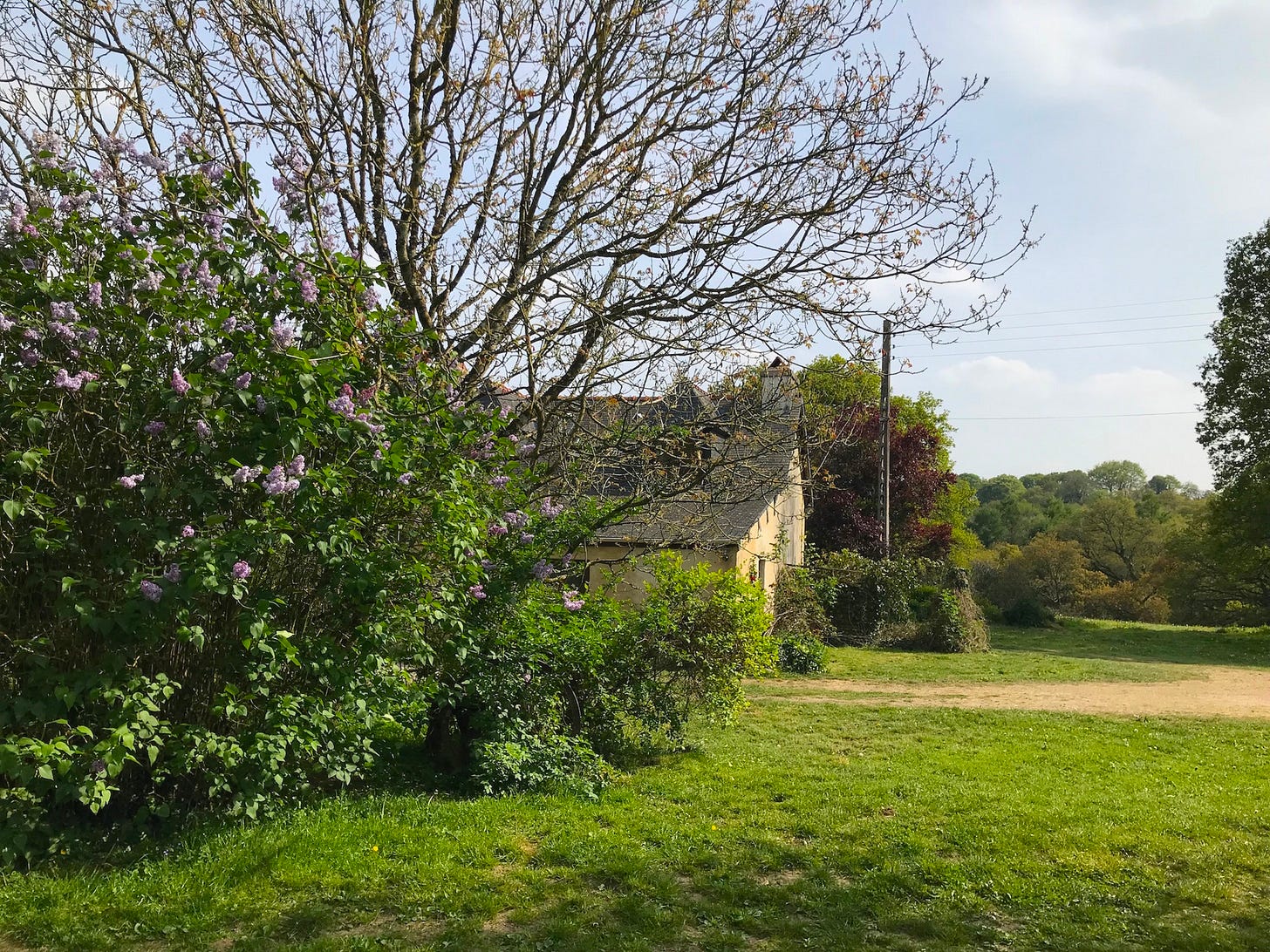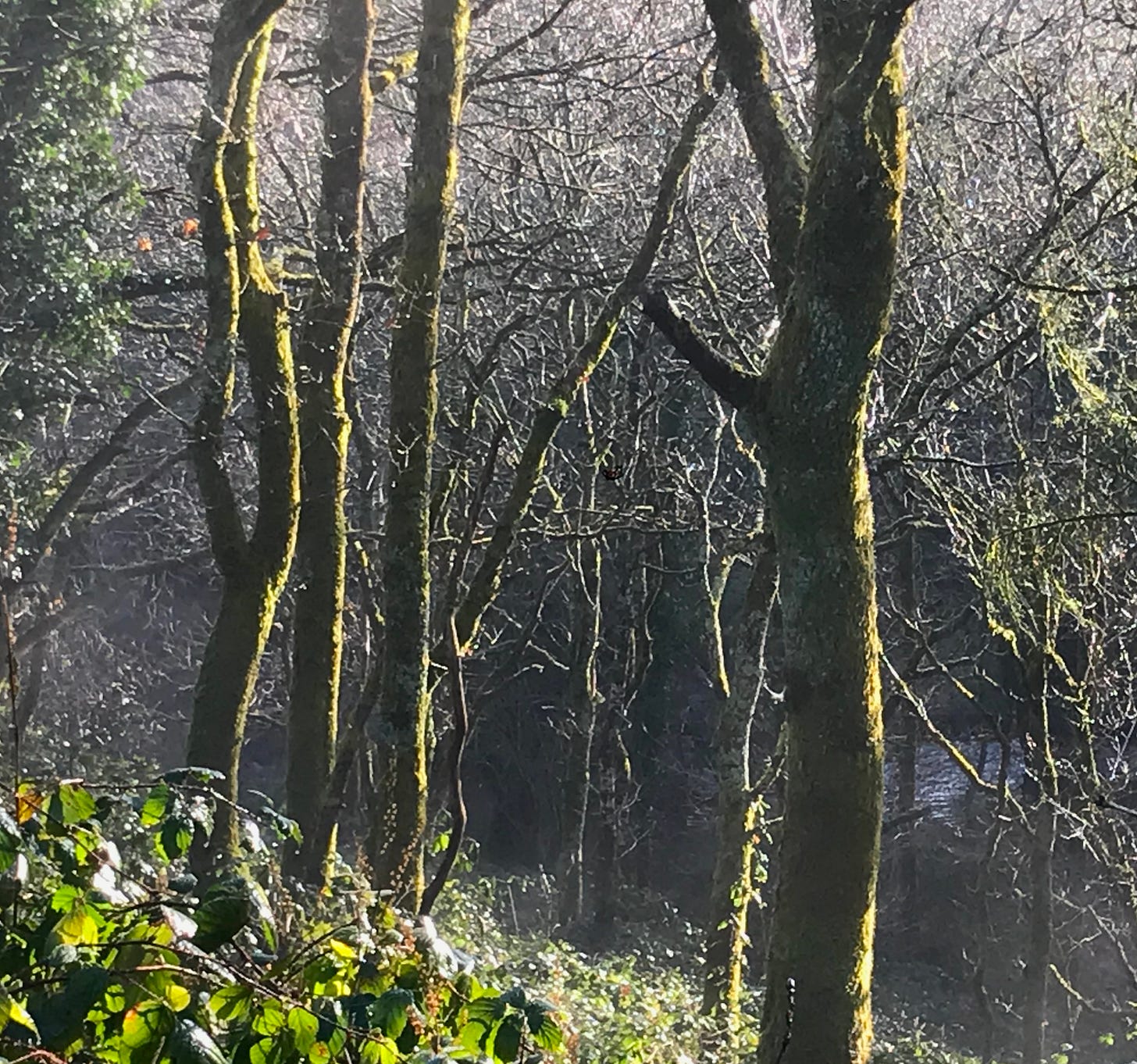Lilac
‘April is the cruellest month, breeding Lilacs out of the dead land, mixing Memory and desire...'
is one of the most famous openings to a poem from the C20th. T S Eliot’s ‘The Waste Land’, written over 100 years ago, reads as an astonishingly prescient poem for our deracinated desert times; except that it could probably refer to any time in the history of humanity, albeit in several different ways, and on a different scale from these days of industry and industrial agriculture.
There is a great deal to say about this poem and its reference to the wounded Fisher King of the Grail corpus, and the connections between the King, the Wasteland and the feminine principle in the shape of the raped Guardians of the Wells, the Well Maidens. But that needs a whole book; and indeed I’ve written about it before and at length.*
So I’m not going there now, but rather: are you someone who loves and is energised by spring and April (in the northern hemisphere), or are you someone – and there are reputedly so many people like this, including my mum, that it needs its own name as a syndrome almost – who is depressed and oppressed by spring and all that bursting-out fecundity which seems like both challenge and reproach?
I love it; and I love the lilac, and rediscovering/remembering all over again the many flowering and often scented shrubs and bushes, offering colour and bee food now and bird food later, that our predecessors planted in the wild margins that divide up our Home Meadow.
Garden
The Home Meadow is our wild garden; it consists of a very diverse two or three acres that surround the house, contain an old orchard, house a small pond, host dogwood, willow and rosa rugosa banks, show off my circular bee and herb bed that has transformed a wasteland area that felt bleak and desolate to us but once, possibly, from the dressed capstones, included a holy well, into an almost hortus conclusus, that intimate and sacred space. The acres are also home to what is our increasingly large vegetable plot. And to many trees.
Right now, TM is out there in sun, as he has been for months now in all weathers, preparing the beds for this year; finally now for the maincrop potatoes. Even when I wasn’t injured there was always much more to do than two of us even giving every afternoon to the garden had a chance of achieving; TM on his own feels it’s never-ending not-catching-up.
All around the Home Meadow is deciduous woodland, mainly oak, hazel and chestnut, birch and bird cherry, covering the scarp on which the house sits, and tumbling down to the stream.
As of last week, and courtesy of our friend Gerard, there is now a longish narrow circular path through that woodland, round my beloved tall rocky outcrops reminiscent of very small Dartmoor tors and perfect for meditation, and down to the stream. Unfortunately, I still can’t walk it, but it won’t be long now.
I managed last week to mow the front and back ‘lawns’, which are not so much lawn as circular areas cut out of the long meadow grass: somewhere for blackbirds to forage, and somewhere for us to sit, a beautiful contrast to the surrounding wilderness, which is not at all wasteland but hugely rich biodiversity and wildlife refuge. (I’ve also managed to sow, with some help, 300 beans in pots ready to go out soon; this is our all-year-round protein crop.)
As I mentioned before, I feel ambivalent about the idea of mowing and even cutting paths. If tending this place, even in the most sensitive and careful of ways, can’t include space for us too, then we are lost before we start. BUT I also feel strongly about keeping spaces for the wild where humans don’t ever go (which is why these days I also can’t support 100% the Right To Roam movement in the UK to which I once signed up).
Did you know that, by biomass, only 4% of mammals on the planet now are wild and freeliving? Yep; the vast majority, almost twice as much ‘biomass’ as human biomass if we include poultry, of mammals now are captive, to feed our huge appetite for meat and dairy. That 4% of mammals live on the margins, in what small amounts of wildlife corridor and untamed land is still left. And here most of those wild mammals we do see are shot, to the extent that there are nothing like as many wild animals as I would expect to see, given the terrain (though the birds are doing better; but for some reason I don’t understand but object to vehemently, given that they are not the most predatory of the corvid family, it appears to be ‘open season’ on jackdaws most if not all of the year).
(Not) Going Native
If you live in rural Brittany – indeed, probably much of rural France – by which I mean in or near a village – long enough, you tend to get caught by the suburban bug. Forget the English cottage garden aesthetic with those tall colourful wispy spires and tumbles of jammed-in flowers, punctuated by scented and floppy shrub roses.
Instead, you plant annuals in mono primary colours in patches between gravel or pots, and unmessy and usually evergreen shrubs that are clipped frequently and symmetrically; always the same few varieties. You uproot so-called weeds almost before they’re visible. Your banks are covered with geotextile membrane with holes made to imprison struggling plants.
Your hedge, probably a laurel one, is trimmed to within perfectly-measured millimetres in every plane. You decorate your garden with things other than plants; often twee representations of nostalgic objets de temps passé: tiny plastic windmills, plaster donkeys, a miniature horse and cart, ceramic tortoises. You kill ‘pests’ and spray weeds. Your lawn will be cut weekly or even more frequently, two or three times a week in summer, and will resemble astroturf. Local passersby will nod approvingly at the neatness.
Even my nearest and dearest neighbours succumb to this suburban itch for tidiness. We laugh with them at how different we are; and/but from time to time I see that a little of the others’ approach is beginning to take root, occasionally.
Here we are out of the way, but I am still conscious of the fact that our state of permanent wildness might be disapproved of. I feel reproached by all the acres of tidiness. I find I have to resist the need for approval, or the guilt, increasingly strongly.
You know how when you are nearly due a haircut there’s an in-between stage where your hair simply looks unkempt? Or the way a pretty child, or a swan, will have a gawky adolescent phase before turning into a beauty? – That’s our meadows, but on a rather longer timescale. Currently we are letting two and a half fields regenerate (the other half of the Bramley field we keep more trim around the orchard bit) and offer habitat and much opportunity for biodiversity; but they’re at that unlovely stage where they’re colonised for much of the year by hundreds of spikes of blown brown seeding dock, blowsy thistles, and gorse or broom: all precursors to nursery saplings, but rough-looking and vigorous. They offer, however, an occasional refuge for a roe deer, hare, badger, fox, pine marten and skylarks. Plus in the midst of it are our 35-odd plantings of fruit and nut trees and bushes for the first and beginnings of the second layer of forest garden, with many more to go.
We’ve made a conscious decision to go down this route (plus we couldn’t possibly find the time and energy to do anything very different, should we wish to), but I imagine to a local onlooker it’s simply an untended mess.
However even I look around now and then and consider tidying.
And yet…
The president of the local hunt is someone with whom I feel I’d have little in common. Quite apart from the shooting of animals, he too belongs to the cut it/clear it/prune it/plastic it brigade, and his hunting dogs spend their whole lives, apart from a weekly hunting excursion in the winter, in kennels. I can hear mournful howling much more often than I’d like. But – and I always like it when my assumptions are overturned, as with Madame la Boulangère who turned out to eat not the croissants and pastries that she makes and sells for a living, but chickpeas, sweetcorn and beans for breakfast (post #29) – when we stopped to talk to him in passing a month or two ago, it turns out that he, beekeeper of 25 hives, grows many square metres of bee flowers (phacelia, an excellent green manure crop too, and sunflowers) and doesn’t use any chemicals.
If you’re willing to be surprised, and to communicate a bit, it is often illuminating how much more we have in common with each other than not.
*I wrote about this in my first book, mentioned here before (Riding the Dragon – myth & the inner journey, 1993) and my early ‘Myth as Metaphor’ workshops in the 1990s along with later ones took this as their central theme, which is how my Mind Body Spirit publishers Element Books first came across my work. Before that, I took these themes as my Part 1 thesis for my degree course in the 1970s; and also as my qualifying thesis for my transpersonal psychology training in the late 1980s.
Thank you, as always, for reading.







Love the beekeeping hunt president. Our wilderness garden seems not to have drawn any comment -- long may it continue, but that kind of pressure to conform can be so insidious.
As for Spring -- I long for it, love it, yet still miss the hibernating months -- all at once ;)
The woodland going down to the stream looks quite enchanting, or rather, enchanted. I imagine it’s magical to be there at early dawn.